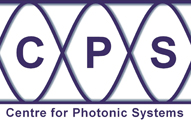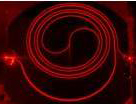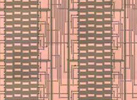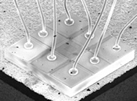| Centre for Photonic Systems Engineering Department Electrical Engineering Division |
 |
 |
 |
 |
 |
| Home | Research | People | Publications | Teaching | CDT | News | Contact |
|---|
|
CURRENT PROJECTS
PREVIOUS PROJECTS |
Science Bridge Award USA: Harnessing Materials for Energy Objective: This Science Bridge proposal builds upon the existing collaboration between the University of Cambridge and the University of California at Santa Barbara to perform the research required to bring existing research through to prototype products and devices in the field of energy-related materials. The proposal has five key themes: organic and inorganic solar cells; light emitting diodes (LEDs) based on gallium nitride (GaN); phosphors for solid-state lighting; organic LEDs (OLEDs); the low-cost integration of LEDs and OLEDs onto printed circuit boards; and ultralight materials and structures. An hour of solar radiation on the Earth provides 14 Terawatt-years of energy, almost the same as the world's total annual energy consumption. However, currently solar energy contributes only 0.03% of the world's energy needs, the main barriers to the widespread use of solar energy being cost and efficiency. The cost of solar cells (typically based on Si or CdTe) is currently too high by a factor of ten relative to other energy sources. The efficiency of solar cells is only 10-15% for Si and 20% for CdTe. We propose two approaches to make solar energy more viable. First, we propose to develop moderate-efficiency (about 15%) organic solar cells at extremely low-cost. UCSB will concentrate on developing more efficient cells and Cambridge will address low-cost manufacturing methods. This requires significant advances in printing methods for organic film deposition. The other approach to solar cells we will pursue is high-efficiency inorganic multilayer solar cells. The basic idea is that by stacking layers in the order of their bandgap, with the layer with the largest bandgap at the top, light is converted into electricity in the most efficient way. We propose to build an innovative multi-layer solar cell based on GaN/InGaN/Si. The GaN layer will absorb the UV part of the solar spectrum, the InGaN layer the blue and green parts and the Si layer the yellow, red and near-IR parts. The theoretical efficiency is above 60%. Such a cell would be too expensive for large-area applications, but would be designed to be used at the focus of mirrors that concentrate the solar light, which will make the technology competitive. GaN-based white lighting is extremely efficient and if used in our homes and offices it could save 15% of the electricity generated at power stations, 15% of the fuel used, and reduce carbon emissions by 15%. However for GaN-based white lighting to become widely used in homes and offices we have to increase the efficiency still further and reduce the cost. We will research various ways to increase the efficiency. To reduce the cost we will grow GaN-based LED structures on 150mm (six-inch) silicon wafers instead of the current growth on two-inch sapphire wafers. This would reduce the LED cost by a factor of ten. Cambridge will grow such LED structures and UCSB will process them into LED lamps. Current white LEDs mainly use a blue LED coated with a yellow phosphor, which gives a cold white light. We will research novel phosphors which give excellent colour rendering, so that skin tones, the colour of clothes, etc, look the same indoors and out. There is increasing evidence that such natural lighting is better for our health than poor quality artificial lighting. We will research OLEDs for large area applications in both displays and lighting. We will also develop the low-cost integration of both LEDs and OLEDs onto printed circuit boards, which will facilitate and reduce the cost of using LEDs and OLEDs. Finally, we will develop novel ultralight materials and structures for use in cars, buses, lorries, trains and planes. These are cellular materials like a honeycomb or 3D lattice. We will develop these using both polymers, metals and composites. Such ultralight materials/structures should save considerable amounts of energy when used in transportation systems such as cars, buses, trains and planes. |
2020 Centre for Photonic Systems: information provided by webmaster@cps.cam.ac.uk |